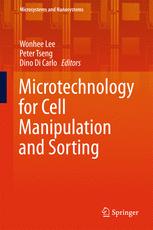

Most ebook files are in PDF format, so you can easily read them using various software such as Foxit Reader or directly on the Google Chrome browser.
Some ebook files are released by publishers in other formats such as .awz, .mobi, .epub, .fb2, etc. You may need to install specific software to read these formats on mobile/PC, such as Calibre.
Please read the tutorial at this link: https://ebookbell.com/faq
We offer FREE conversion to the popular formats you request; however, this may take some time. Therefore, right after payment, please email us, and we will try to provide the service as quickly as possible.
For some exceptional file formats or broken links (if any), please refrain from opening any disputes. Instead, email us first, and we will try to assist within a maximum of 6 hours.
EbookBell Team

4.8
64 reviewsThis book delves into the recent developments in the microscale and microfluidic technologies that allow manipulation at the single and cell aggregate level. Expert authors review the dominant mechanisms that manipulate and sort biological structures, making this a state-of-the-art overview of conventional cell sorting techniques, the principles of microfluidics, and of microfluidic devices. All chapters highlight the benefits and drawbacks of each technique they discuss, which include magnetic, electrical, optical, acoustic, gravity/sedimentation, inertial, deformability, and aqueous two-phase systems as the dominant mechanisms utilized by microfluidic devices to handle biological samples. Each chapter explains the physics of the mechanism at work, and reviews common geometries and devices to help readers decide the type of style of device required for various applications. This book is appropriate for graduate-level biomedical engineering and analytical chemistry students, as well as engineers and scientists working in the biotechnology industry.